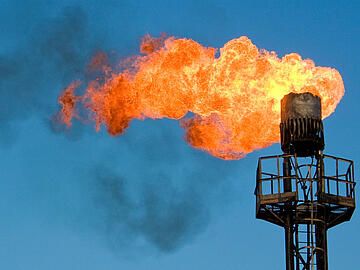
Ultra-trace analysis of Nitrogen, Sulfur, and Chlorine at Dow Chemical Company
Thu 28 Apr, 2016
Challenge
- Product quality control
- Determination of important elements in raw materials and intermediate and finished products
- Ultratrace analysis of nitrogen, sulfur, and chlorine
Solution
- Elemental analyzer multi EA® 5000
Benefits
- Analysis of organic liquids, viscous and solid materials, gases and liquefied pressurized gases
- Low maintenance
- From ppb to percent
- Self Check System
An elemental analyzer for product quality control
Dow maintains the highest of standards whether it comes to the quality of its products and processes, its worker safety, or its environment protection. And Analytik Jena’s high-precision analytical measuring technology plays a role in making this possible. Analytik Jena analyzers are used in laboratories to make it possible to meet safety requirements and comply with various threshold values both in terms of product quality and environmental parameters.
This includes the versatile multi EA® 5000 elemental analyzer, used chiefly by Dow to determine important elements in raw materials and intermediate and finished products, and to control the quality of these products. The analyzer finds particular use in the ultratrace analysis of nitrogen, sulfur, and chlorine in organic liquids, viscous and solid materials, and in gases and liquefied pressurized gases. One of Dow’s major tasks involves the analysis of sulfur in petrochemical products. The incineration of these products leads to sulfur and nitrous oxides, which in turn contribute to the acid rain that not only damages forests but which poses health risks as well. There are therefore strict guidelines for permissible levels of sulfur compounds. Using the multi EA® 5000 for its analyses, Dow ensures that these guidelines are met while safeguarding the quality of other products as well.
Competitive advantages for the customer
Equipped and ready to meet even higher quality demands
Complete combustion free of residue
Saving time and money
Ultratrace analysis
Converting the furnace from vertical to horizontal mode rapidly and easily
Fitting each sample matrix and analysis objective
Two furnace modes, providing flexibility and sensitivity
In the multi EA® 5000, samples are first pyrolyzed in a two-phase decomposition process in a protective gas atmosphere, and are then oxidized at approx. 1000 °C in a stream of oxygen. In the process, all sulfur, nitrogen, and carbon compounds are converted into their gaseous oxides (SO2, NOX, CO2). These are subsequently analyzed and quantified using particular detectors. UV fluorescence, chemiluminescence, and infrared measurement are all put to use in the process. If halogen compounds are to be found in the sample, they are converted into gaseous hydrogen halides (e.g. HCl). The hydrogen halides are placed in a measuring cell with a titration process. The multi EA® 5000 oxidizes all types of samples through a controlled, focused procedure in a high-temperature furnace. The Double Furnace concept allows the laboratory team to choose between the vertical and horizontal modes of combustion as fits each sample matrix and analysis objective. The furnace can be converted rapidly and easily, an advantage not provided by conventional elemental analyzers.
In the horizontal mode, samples are guided fully automatically into the combustion unit. The process is further supported by flame sensor technology. As Peter Frenzel, site analytical leader and quality manager at Dow explained: "Each sample is completely combusted and free of residue. This is the best basis for reliable measurement results. And at the same time, we save money in the development of methods as the flame sensor makes it possible for each sample, in various volumes, to be oxidized quickly and simply without knowing its exact combustion characteristics." The smallest concentrations of elements can be determined best in the vertical furnace mode. The minimum amount of sulfur detectible using ultratrace analysis lies at a mere 5 parts per billion (5 ppb). As Peter Frenzel put it: "We are therefore excellently equipped for the future and ready to meet even higher quality demands for our products."
About the Dow Chemical Company
Active around the world, the Dow Chemical Company (Dow) has been employing Analytik Jena GmbH+Co. KG instruments for the past 15 years. Founded in 1897, Dow is one of the world’s leading manufacturers of basic and special chemicals and highperformance materials. Based in Midland, Michigan, it is one of the ten largest U.S. companies in Germany. Dow has also been active in Central Germany since 1995, continuing the region’s strong tradition in plastics and chemical manufacturing at sites in Schkopau, Böhlen, Leuna, and Teutschenthal.
Download Key Facts & Overview
Success_Story_Dow_EA_en.pdf
Open PDF